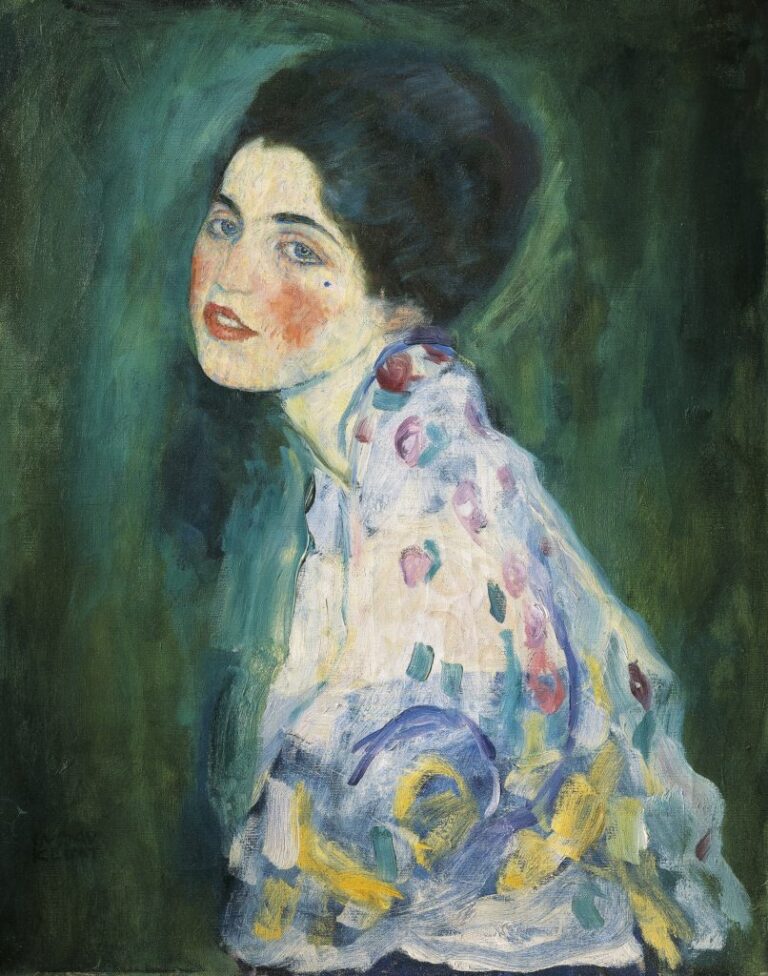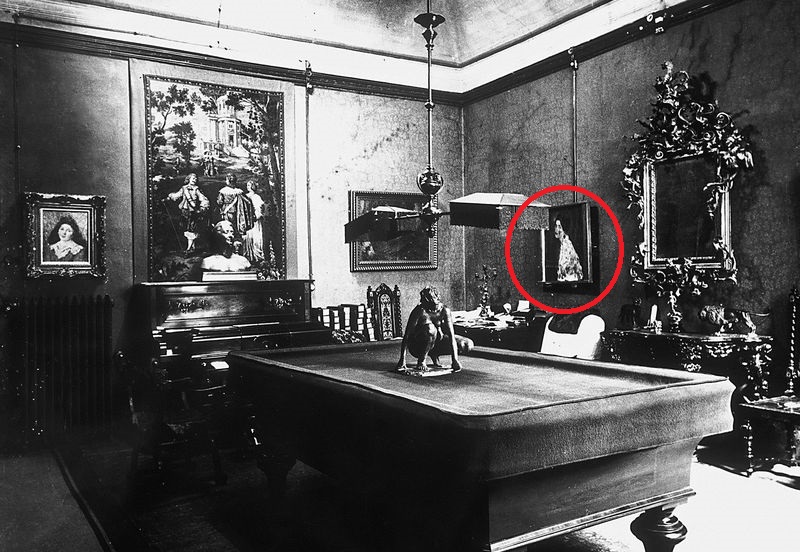Mystery of a Lady
THE BAFFLING DISAPPEARANCE OF GUSTAV KLIMPT’S MASTERPIECE
Story by Liisi Rohumae
On February 9, 1997 a phone call was made to the police from the Ricci Oddi Gallery of Modern Art in Piacenza, Italy: a painting of immeasurable value had been stolen. Immediately, an extensive investigation followed but over twenty-five years later the theft still remains a mystery.
Gustav Klimt, the Austrian symbolist painter and founder of the Vienna Sezession movement, is one of the most celebrated artists in the world and his paintings rank in the top echelons of the international art market. His primary subject was the female body and his works are imbued with frank eroticism. Klimt completed the oil painting “Portrait of a Lady” in 1916-1917, a striking woman adorned in opulent attire, her enigmatic gaze drawing viewers into a world of elegance and mystery. For decades, it graced the walls of the Ricci Oddi Gallery where it was displayed alongside other treasures of the art world.
However, in February 1997 tragedy struck when the painting inexplicably disappeared from the gallery’s walls. The circumstances surrounding the theft of Klimt’s masterpiece are as perplexing as they are tantalizing. Initial investigations suggested that the painting might have been stolen by professional art thieves, drawn to its immense value and historical significance. But as the years passed without any substantial leads, theories began to emerge suggesting a more intricate web of deceit and betrayal.
One theory posits that the painting was stolen by an insider, someone intimately familiar with the gallery’s layout and security protocols. This theory gained traction due to the apparent lack of forced entry and the precise manner in which the painting was removed from its frame. Suspicion fell on individuals associated with the gallery, including staff members and even members of the Ricci Oddi family themselves.
One theory posits that the painting was stolen by an insider, someone intimately familiar with the gallery's layout and security protocols.

Another theory suggested a more elaborate scheme involving international art traffickers and black-market dealers
Another theory suggested a more elaborate scheme involving international art traffickers and black-market dealers. According to this theory, the painting was stolen to order, commissioned by a wealthy collector willing to pay exorbitant sums for a piece of art with such historical significance. In this scenario, the painting may have been smuggled out of Italy and sold to a private collector, hidden away from prying eyes and the scrutiny of law enforcement.
Shockingly, the mystery of the painting goes far beyond its perplexing theft because in 1996 an art student Claudia Maga discovered that “Portrait of a Lady” is in fact a double portrait. An X-ray test confirmed Maga’s suspicions, revealing another Klimt painting “Portrait of a Young Lady” underneath, an art piece which had not been seen since 1912.

Maga has said that she might have unwittingly played a part in the disappearance of “Portrait of a Lady” as her sensational discovery created new attention around the painting. It is the only known double portrait of Klimt’s career.
“I felt guilty,“ she said in an interview in 1997. “This painting had almost hung unnoticed in the Ricci Oddi Gallery for years, my discovery, the double story, made it interesting all of a sudden.”
It is believed that the young lady portrayed on the original painting died suddenly after Klimt had mostly finished the work and he painted over it to try and forget the pain of her death. Klimt was in love with the young lady and couldn’t bring himself to completely change the portrait. Aside from removing the hat and the shawl, her face and expression remains unchanged.
Few art mysteries captivate the imagination quite like the disappearance of Klimt’s “Portrait of a Lady.” This masterpiece is not only a testament to Klimt’s extraordinary talent but also a relic of a bygone era. Its sudden vanishing act from the public eye sparked endless speculation and conspiracy theories.
Photograph of Gustav Klimpt.
Portrait recovery location.
Despite numerous investigations and appeals for information, the whereabouts of “Portrait of a Lady” remained shrouded in mystery. However, the passage of time did not dampen the fervor of those determined to unravel the truth behind its disappearance. In recent years, renewed efforts were made to locate the missing masterpiece, with authorities employing advanced technology and forensic techniques to scour the globe for any traces of the painting.
As the search continued, so did the speculation about its whereabouts. Some believed that the painting may have been hidden away in a private collection, waiting for the right moment to resurface and claim its rightful place in art history. Others were convinced that it had been destroyed, either deliberately or inadvertently, lost to the ravages of time and neglect.
And then in 2019, the mystery miraculously solved itself when a gardener clearing away some decades-old ivy from an exterior wall of the Ricci Oddi Gallery noticed a strange steel hatch. When he opened it, he discovered a large parcel wrapped in a black cloth in the crawl space.
“At first I thought it was a joke,” said employee Dario Gallinari. “But then the gardener gave me this canvas that was half-hidden by a black trash bag.” On the lower half, Gallinari immediately recognized a woman’s dress.
It was the original “Portrait of a Lady”, its identity authenticated by a new set of X-rays that matched those taken in 1997. “The correspondence between the images allowed us to determine that it’s definitely the original painting,” explained art expert Guido Cauzzi. Cauzzi added that: “It’s gone through a few ordeals but only needs some routine care, nothing particularly complicated.”
Thief or thieves might’ve taken it out of its hiding spot at some point but by all appearances it seems the painting that sparked a decades-long investigation and endless conspiracy theories may have never even left the gallery territory.
One thing is certain: the mystery of Gustav Klimt’s double-painting “Portrait of a Lady” will endure, a testament to the power of art to captivate, inspire, and confound us. –
